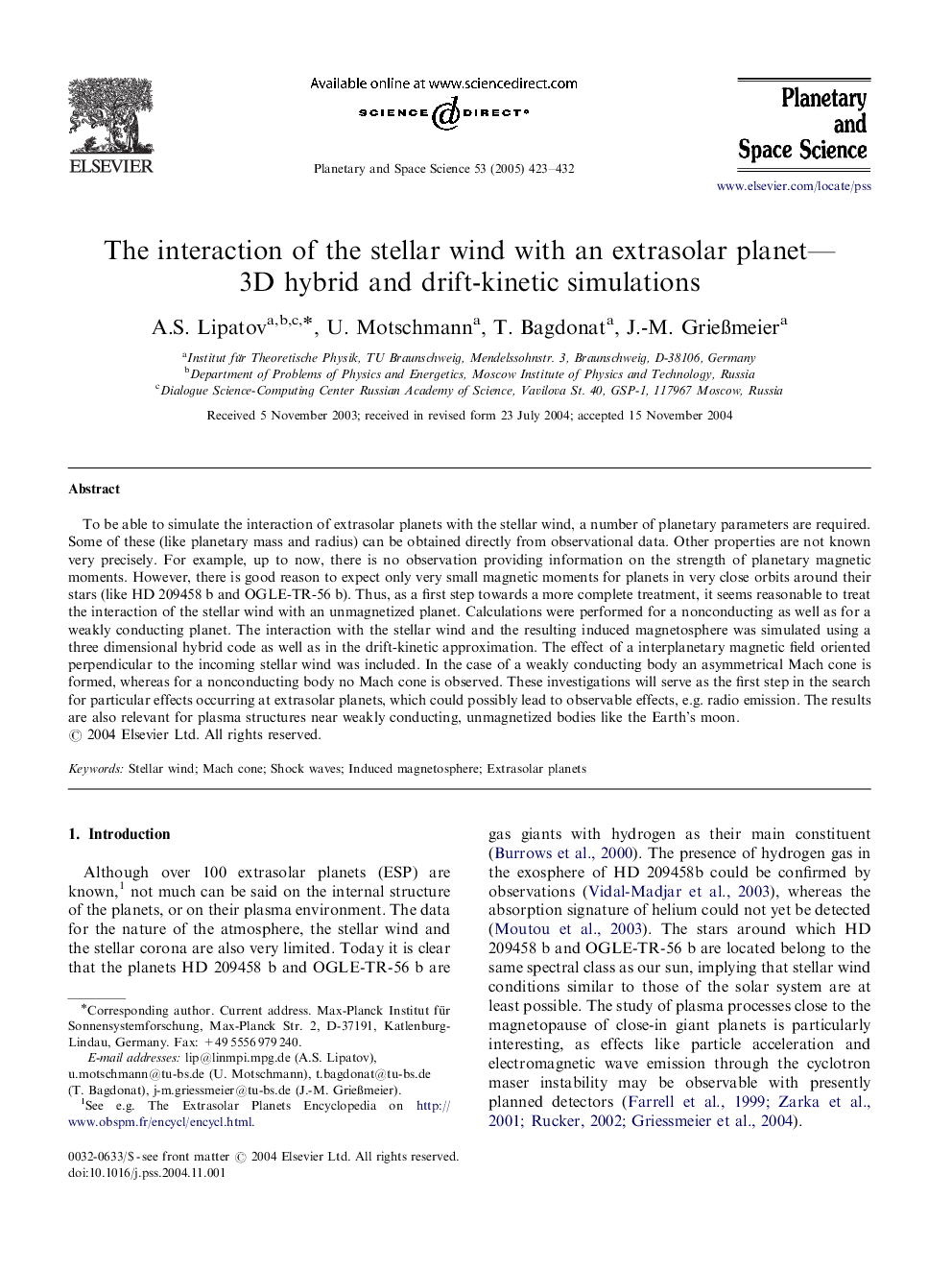| Article ID | Journal | Published Year | Pages | File Type |
|---|---|---|---|---|
| 10705729 | Planetary and Space Science | 2005 | 10 Pages |
Abstract
To be able to simulate the interaction of extrasolar planets with the stellar wind, a number of planetary parameters are required. Some of these (like planetary mass and radius) can be obtained directly from observational data. Other properties are not known very precisely. For example, up to now, there is no observation providing information on the strength of planetary magnetic moments. However, there is good reason to expect only very small magnetic moments for planets in very close orbits around their stars (like HD 209458 b and OGLE-TR-56 b). Thus, as a first step towards a more complete treatment, it seems reasonable to treat the interaction of the stellar wind with an unmagnetized planet. Calculations were performed for a nonconducting as well as for a weakly conducting planet. The interaction with the stellar wind and the resulting induced magnetosphere was simulated using a three dimensional hybrid code as well as in the drift-kinetic approximation. The effect of a interplanetary magnetic field oriented perpendicular to the incoming stellar wind was included. In the case of a weakly conducting body an asymmetrical Mach cone is formed, whereas for a nonconducting body no Mach cone is observed. These investigations will serve as the first step in the search for particular effects occurring at extrasolar planets, which could possibly lead to observable effects, e.g. radio emission. The results are also relevant for plasma structures near weakly conducting, unmagnetized bodies like the Earth's moon.
Related Topics
Physical Sciences and Engineering
Earth and Planetary Sciences
Geophysics
Authors
A.S. Lipatov, U. Motschmann, T. Bagdonat, J.-M. GrieÃmeier,
